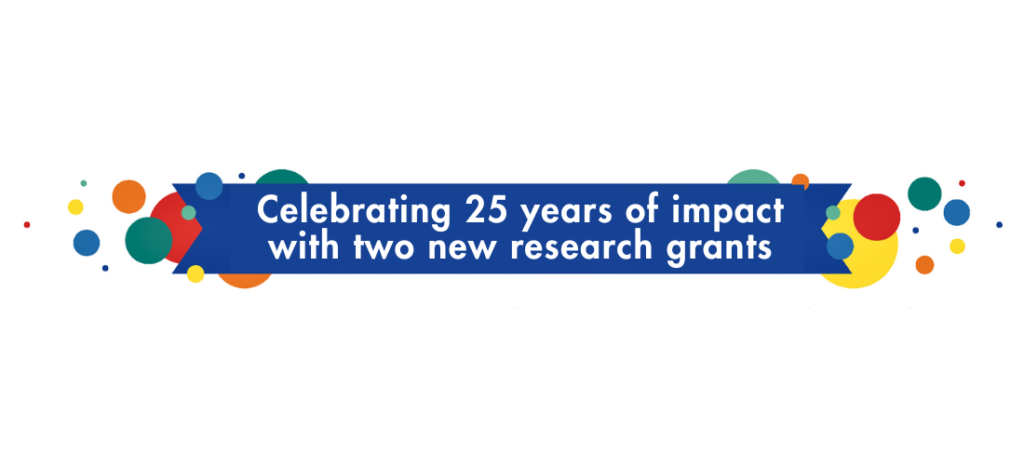About macular disease research
Australia is considered a world-leader in eye research. Research is a lengthy, expensive and high-risk process.
Research projects typically take years to complete. Some projects may never result in treatment. For others, breakthroughs in treatments and cures may be on the horizon. All research, however, adds to our knowledge of macular disease.
Research is a journey of discovery, with the ultimate destination being a place where we can save sight.
Along the way we will learn a great deal that can yield major benefits.
Phases of medical research
Basic research
In medicine, basic science research aims to better understand the disease.
Basic medical research is also often referred to as pure research or fundamental research.
Understanding the changes in cells and molecules associated with illnesses provides us with knowledge. This knowledge in turn may eventually lead to new ways to diagnose, treat and prevent diseases.1
Pre-clinical research
Pre-clinical research is a stage of research that begins before testing in humans can begin. It’s during this phase that important feasibility, iterative testing and drug safety data are collected, typically in laboratory animals.
Any new drug candidate is subject to several pre-clinical studies. This is so researchers can establish and characterise its safety profile.
The pre-clinical stage is important for sorting out the most promising candidates to go on to human clinical trials, which are costly and time consuming.2
Clinical research
This stage of research usually involves testing medications and other treatments and interventions for illnesses and conditions.
Clinical trials, for example, may aim to establish the correct dosage, safety, efficacy of a particular drug. Trials will also compare a possible new treatment to other, more established treatments (if these are available) or to standard care.
Trials are designed to reduce bias or incorrect conclusions and typically follow several distinct phases.
Phase I
In Phase I, clinical trials are done to test a new treatment or medicine for the first time in a small group of people to evaluate safety. For example, a phase I trial may help researchers determine a safe dosage range and identify side effects.
Phase II
This second phase – Phase II – involves clinical trials to study the treatment in a larger group of people to determine efficacy (that is, whether it works as intended) and to further evaluate its safety.
Phase III
The third phase builds on this again with larger groups. Several hundred to several thousand people may take part. A Phase III trial may compare a particular treatment or medicine to other standard or experimental interventions (or to non-interventional standard care). At this phase, studies are also used to monitor adverse effects and to collect information that will allow the treatment or medicine to be used safely.
Phase IV
You’ll see Phase IV studies being done after a treatment or medicine has been marketed. These studies are designed to monitor the effectiveness of the approved intervention in the general population. They’re also used to collect information about any adverse effects associated with widespread use over longer periods of time.3
How do I get involved in a clinical trial?
When clinical trials reach the stage of needing human volunteers for either a drug or a device, they’ll target patients with specific disease profiles.
Clinical trials involve people of all ages and health conditions. Some trials may require specific types of people. This is called inclusion and exclusion criteria.
For people with a macular disease, participating in a trial may help researchers better understand the condition and/or how to treat it. In some cases, clinical trials can allow early access to new treatments before they are widely available.
Taking part in a trial is completely voluntary. You can withdraw at any time. There are some risks involved in being a participant in a clinical trial. For example, the treatment may not work for you, or you may experience side effects. The safety of clinical trials is constantly monitored. A trial can be modified or stopped for safety or ethical reasons.4
Drug approval for use in Australia for safety and efficacy
Once a manufacturer has completed the pre-clinical and phase 1 to 3 clinical studies for a new treatment, it will submit comprehensive data to the Therapeutic Goods Administration (TGA) for review. The TGA examines this data, together with information on how the research was conducted. The TGA also reviews information about the manufacturing process to ensure that drugs are manufactured to specification. Only after the TGA is satisfied that the treatment has an acceptable safety profile and is effective can it be registered for use in Australia.
Making drugs affordable
Following registration, the manufacturer can submit an application to the Pharmaceutical Benefits Advisory Committee (PBAC). The PBAC reviews additional data regarding the safety, efficacy and cost-effectiveness of a new treatment to decide whether it should receive a government subsidy and be placed onto the Pharmaceutical Benefits Scheme (PBS).
Once a treatment is placed on the PBS, the patient will only pay a part of the actual cost of the drug, with the rest being subsidised by the government.
References
1. Information adapted from JAMA April 3, 2002 – Vol 287, No 13, p1754.
2. Information adapted from the CSIRO.
3. Information adapted from the Australian Clinical Trials website.
4. Information adapted from NPS MedicineWise website.



















